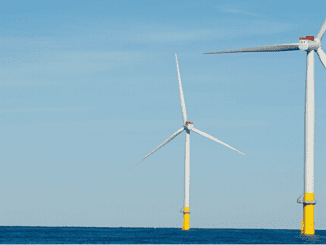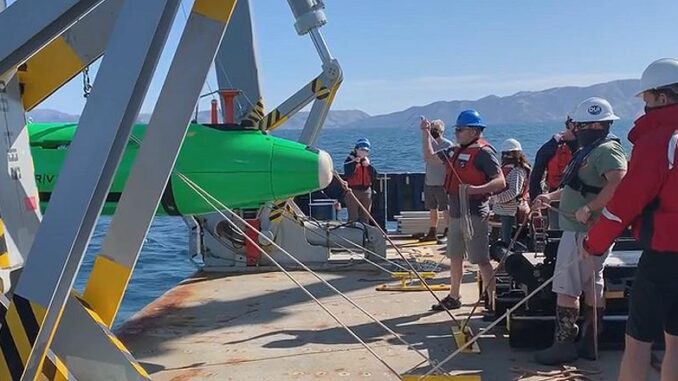
SAN DIEGO, California, January 7, 2024 (ENS) – Tons of munitions, DDT and petrochemicals were dumped for decades in deep ocean basins off the coast of Los Angeles, scientists from three California universities are discovering. This dumping is known to have happened from the 1940s until 1972, when the Marine Protection, Research and Sanctuaries Act, also called the Ocean Dumping Act, came into force, and the chemicals are still there.
To understand the environmental impact of industrial waste dumping off the Los Angeles coast, in April 2023 researchers from the University of California’s Scripps Institution of Oceanography revisited two industrial undersea dumpsites to identify objects discarded on the seafloor.
The research was conducted by UC Santa Barbara and San Diego State University scientists collaborating with those from the Scripps Institution.
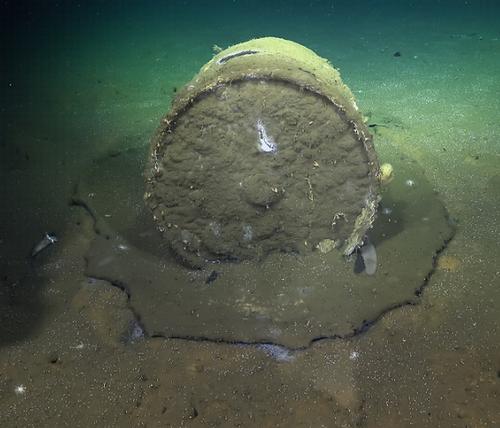
Imagery collected along debris lines found most of the discarded objects to be multiple types of discarded military munitions and pyrotechnics.
The site was a known location for industrial dumping, including byproducts from the manufacturing of the pesticide DDT, and was first surveyed using robotic vehicles by the same team in April 2021.
The 2021 survey, published in the journal “Environmental Science and Technology,” documented thousands of barrel-sized objects organized in lines across the basin.
The goal of the second survey was to extend maps of the seafloor using higher resolution acoustic sonar imaging techniques, to apply video imaging systems to classify objects in a previously mapped debris field, and to collect observations of deep sea ocean currents.
The 2023 survey mapped 350 square kilometers (135 square miles) and recorded more than 300 hours of video footage.
Barrels from the legacy of industrial dumping, and several old fishing vessels were found. The barrels on the seafloor from the legacy of industrial dumping were found to be concentrated in two locations; barrels were not pervasive across the dump site. Track-line patterns in the surveyed area suggest that the dumping was repeatedly done from an underway platform such as a moving ship or barge.
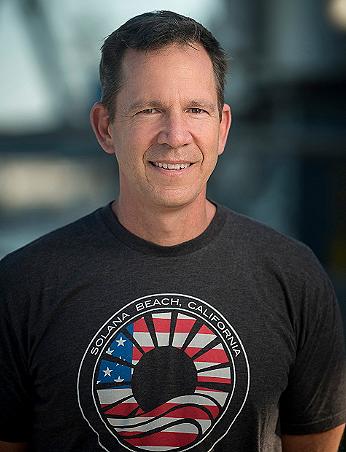
Led by Scripps oceanographers Sophia Merrifield and Eric Terrill, the 2023 survey used a deep water autonomous underwater vehicle with state-of-art synthetic aperture sonar and a remotely-operated vehicle, ROV, with an HD video camera, both capable of working up to full ocean depth of 6,000 meters (19,600 feet).
The expedition took place with support from the U.S. Navy’s Supervisor of Salvage and the Office of Naval Research.
The 2021 and 2023 survey findings have been received by the US Navy, which commented in a statement, “These munitions are likely a result of World War II-era disposal practices. While disposal of munitions at sea at this location was approved at that time to ensure safe disposal when naval vessels returned to US ports, the Navy follows Department of Defense guidance for the appropriate disposal of munitions that aligns with state and federal rules and regulations.”
The Navy will be reviewing the scientists’ findings to ensure that these risks to human health and the environment are managed appropriately and within federal and state laws and regulations.
Whale Falls Mapped Too
Additionally, scientists mapped sunken whale carcasses, called whale falls. A total of seven whale falls were confirmed with video imagery, but the sonar data suggests more than 60 may exist in the footprint of the survey data collected by the autonomous underwater vehicle, AUV.
This area of ocean floor is located between Catalina Island and the mainland off Long Beach Harbor in Los Angeles.
“The number of whale falls seems quite high relative to previous models of how many may occur on the seafloor off California,” said Scripps Oceanography marine biologist Greg Rouse, who has studied the ecosystems around whale falls.
“However, the skeletons were mainly in very low oxygen water that likely slowed decomposition markedly and the burial rate by sediment may also be very slow there. This would mean the whale falls may have accumulated over many decades,” Rouse said.
The science team deployed a seabed mooring outfitted with a deep ocean current meter and oxygen sensor to measure seabed currents so that scientists can better understand transport mechanisms that might impact the contaminated sediments.
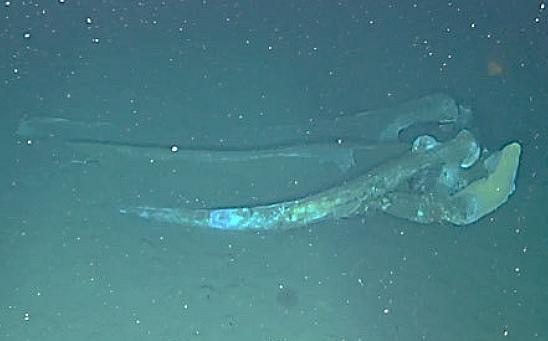
“Our survey provides an opportunity to develop and apply analytical techniques to acoustic and optical imagery over wide areas,” said Merrifield, an observational physical oceanographer who specializes in ocean robotics. “We anticipate these datasets will inform additional studies addressing impacts of dumping activities on the marine food web.”
The survey was funded as part of a Congressionally directed community project from the late U.S. Senator Dianne Feinstein and Senator Alex Padilla and supported by Congressmembers Mike Levin and Alan Lowenthal.
The survey was also supported by the National Ocean and Atmospheric Administration, NOAA, which awarded $5.6 million in 2022 to further characterize, monitor and research potential ecosystem impacts of the DDT dumpsite.
An additional $6 million directed by Senators Feinstein and Padilla was awarded through NOAA in September 2023 to fully assess contamination from DDT and other pollutants and bioremediation mitigation strategies.
The survey data follow ongoing studies by UC Santa Barbara’s David Valentine, who in 2011 and 2013 discovered concentrated accumulations of DDT in the sediments and visually confirmed 60 barrels on the seafloor.
Valentine is currently mapping DDT in sediments collected across the San Pedro Basin, and the extent to which those wastes currently impinge on Catalina Island. Located only 22 miles from the city of San Pedro, Catalina is considered to be the crown jewel of the Channel Islands. Rich in history with a unique ecology, Santa Catalina Island is a popular attraction for visitors.
“Our preliminary findings of our analysis of sediments are showing that bulk dumping of DDT acid waste was the norm, that DDT immediately entered the environment and was likely not in barrels,” said Valentine, who in a 2019 study characterized the disposal of DDT waste as inherently sloppy.
“Once dumped, DDT spread at the seafloor, expanding its footprint to at least the base of the Catalina slope. We are finding that original DDT remains abundant in the seafloor today, in both absolute and relative terms,” he said.
The U.S. EPA also stated that the majority of DDT found at offshore dumpsites was likely deposited through bulk-dumping, not in containerized barrels.
Scripps Oceanography marine biologist Brice Semmens is working to understand seafood health and safety. Semmens’ lab is looking at five key recreationally-fished species to analyze samples for DDT and polychlorinated biphenyls, PCBs, which are highly carcinogenic chemical compounds.
The recreational species include kelp bass, vermillion rockfish, chub mackerel, Pacific bonito, and Pacific sanddab based on their diversity of life history, characteristics, niches, and behaviors. In partnership with the Southern California Coastal Water Research Program, the Semmens Lab is beginning the chemical analysis of liver and muscle tissue from individual fishes.
Using the resulting data, researchers will generate models of toxin fate and transport in the coastal ecosystem. They aim to scientifically demonstrate the safety of California seafood products, and provide guidance to fishing communities regarding best practices for minimizing the harvest of potentially unsafe seafood.
Finally, Scripps microbiologists Paul Jensen and Jack Gilbert are working to identify the microbes that are major contributors to DDT degradation, with the goal of finding microbes that may be useful for bioremediation of the toxic chemical.
Featured image: Scientists from Scripps Institution of Oceanography at UC San Diego deploy the REMUS 6000 autonomous underwater vehicle during the March 2021 seafloor survey of the dumpsite between Catalina Island and Los Angeles. (Photo by Scripps Institution of Oceanography)



